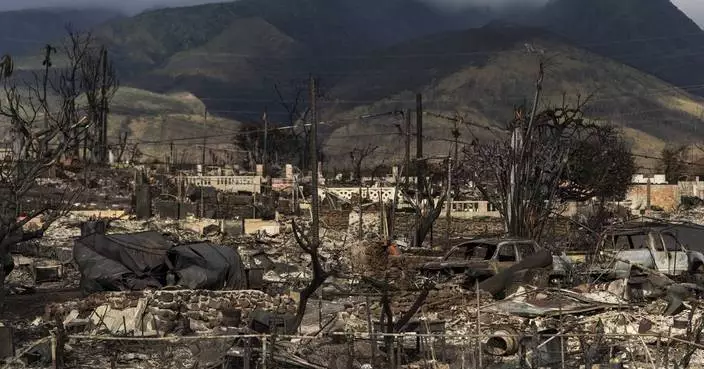President Joe Biden will hold a news conference Thursday, the key event in a monumental week during which the Democratic incumbent is fending off calls for him to step aside as the party's presumptive nominee following a shaky debate performance.
It's just the type of event that many political watchers have said Biden needs to pull off successfully to turn back demands — including from within his own party — that he withdraw from his reelection battle against presumptive Republican nominee Donald Trump.
Biden has argued that he had a singularly bad night in Atlanta and that it wasn't representative of his mental acuity. A strong performance Thursday could convince members of his party that he still has the ability both to win in November and to serve a second term. A weak effort — or stumbles similar to his debate performances — could make the calls for him to withdraw grow much louder.
Here are the details on what White House press secretary Karine Jean-Pierre has referenced as Biden's “big boy” news conference:
Biden is scheduled to take questions from the White House press corps at 6:30 p.m. ET Thursday. It had initially been slated for 5:30 p.m., but the White House moved the time to an hour later.
Biden will be speaking from the Walter E. Washington Convention Center, a short distance from the White House, where many events of the ongoing NATO summit are being held.
The White House streams much of its live content. Given the attention on this event, television networks could also break away from programming to carry Biden's remarks live once he starts speaking.
The Associated Press will offer a livestream at apnews.com.
Probably a lot of people.
CNN reported that 51 million people watched the Atlanta debate, which was in primetime, while more than 8 million people tuned in to watch Biden's ABC interview live. If networks break into their daily coverage or cable channels carry it live, that will guarantee a significant number of eyes on Biden.
Aside from some apparent exceptions — like incidents in which two radio hosts said Biden's campaign sent them planned questions ahead of time — it's not standard practice for the president to know precisely what will come up during interviews or news conferences.
His aides prepare him for a host of possibilities based off the headlines of the day, so they’re prepping him for the likelihood that journalists will want to ask about his fitness for office, the NATO summit or other topics.
That's not set in stone, and there's not a ton of precedent.
Biden hasn’t held very many news conferences that aren’t tied to a foreign leader’s visit or trips abroad. Typically, those are what’s known in the business as a “2+2,” meaning two reporters from the U.S. and two foreign reporters ask questions.
Biden returns to the campaign trail with a trip to Michigan Friday. He will also do an interview with NBC on Monday.
Associated Press writer Colleen Long in Washington contributed to this report.
Meg Kinnard can be reached at http://twitter.com/MegKinnardAP.
Follow the AP's coverage of the 2024 election at https://apnews.com/hub/election-2024.
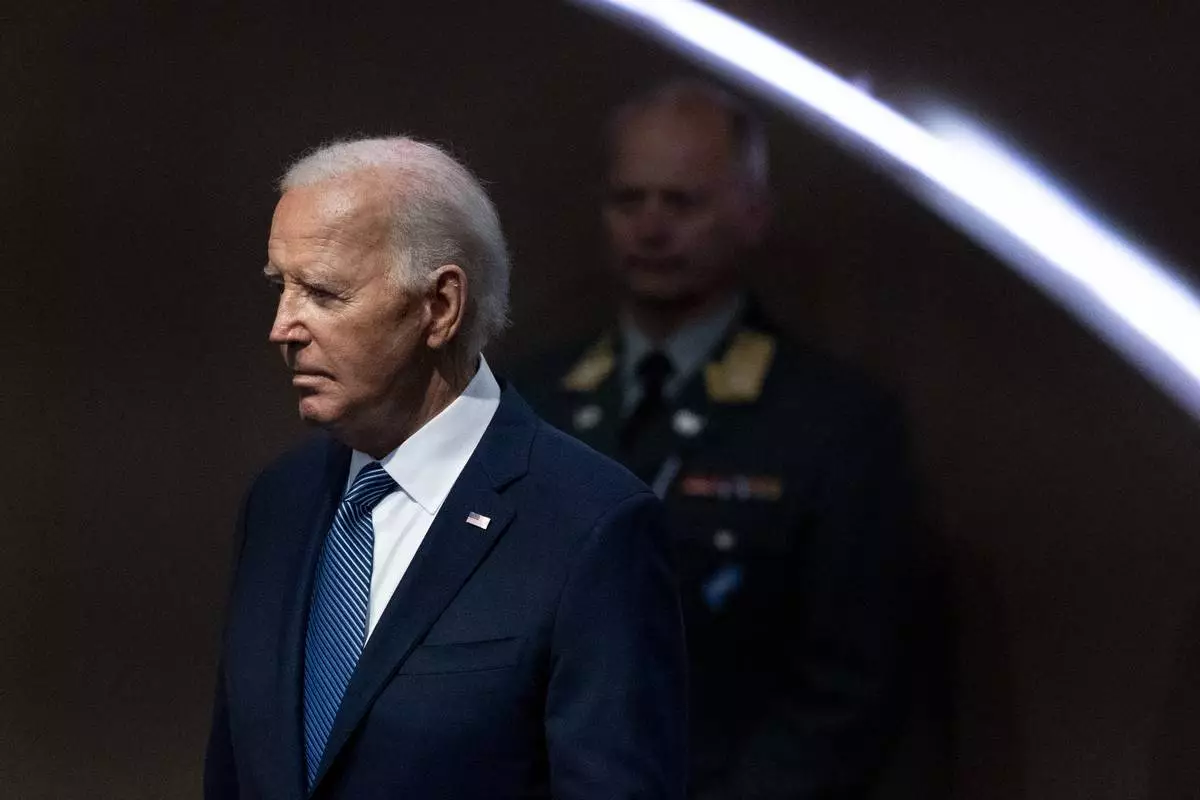
President Joe Biden arrives for the NATO summit in Washington, Wednesday July 10, 2024. (AP Photo/Jacquelyn Martin)
DUBAI, United Arab Emirates (AP) — Iran's threatened retaliatory strike on Israel over the assassination of Hamas official Ismail Haniyeh drew major world powers into a high-wire act of diplomacy Tuesday.
Halting or limiting an Iranian strike in some eyes could bolster a monthslong effort to reach a cease-fire in a war that's devastated the Gaza Strip and killed nearly 40,000 Palestinians, according to the territory's health ministry. It could also free the Israeli hostages who remain captive there since Hamas' Oct. 7 attack on southern Israel that killed 1,200 people and began the conflict.
Failure to do so could see Iran launch a complex drone-and-missile attack in tandem with Lebanon's Hezbollah militia, now separately aggrieved over Israel's killing of one of its top commanders, straining the ability of Israel's missile defenses and its allies to defend against the assault. Widespread losses could push Israeli Prime Minister Benjamin Netanyahu's hard-line government into its own direct attack on Iran — and drag the wider Middle East into a regional war.
That fear has prompted a flurry of diplomacy in the region. France, Germany, and the United Kingdom on Monday urged Iran and its allies to “refrain from attacks that would further escalate regional tensions and jeopardize the opportunity to agree (to) a cease-fire and the release of hostages."
In a call, British Prime Minister Keir Starmer warned Iran's new reformist President Masoud Pezeshkian that there was “a serious risk of miscalculation and now was the time for calm and careful consideration.”
Pezeshkian rebuffed the message.
"A punitive response to an aggressor is a right of nations and a solution for stopping crimes and aggression,” Pezeshkian said.
The new Iranian president also has been called by Cardinal Pietro Parolin, the Vatican's secretary of state, and German Chancellor Olaf Scholz over the retaliation threat.
Pezeshkian has acknowledged he will follow the orders of Iranian Supreme Leader Ayatollah Ali Khamenei, who already said Israel “paved the way for a severe punishment upon itself with this action.”
Iran has been repeatedly targeted by suspected Israeli assassinations and sabotage campaigns, increasing the pressure on its theocracy to act to maintain its leadership position in its self-declared “Axis of Resistance” with militias it arms in the region. But it also has faced years of widespread protests, economic woes and other domestic challenges embrittling the public's support of the government. Its first complex attack on Israel in April caused little damage, raising the risk of it needing to go larger this time in response.
The United States, Israel's main backer, has called repeatedly on Iran not to retaliate. It also has backed efforts mediated by Egypt and Qatar to reach a cease-fire in the wider war. However, it's also prepared militarily in the Mideast in case things do escalate.
The U.S. military has instructed the USS Abraham Lincoln aircraft carrier strike group to sail more quickly to the area. America also has ordered the USS Georgia guided missile submarine into the Mideast, while the USS Theodore Roosevelt aircraft carrier strike group has been in the Gulf of Oman. Additional F-22 fighter jets have flown into the region, while the USS Wasp, a large amphibious assault ship carrying F-35 fighter jets, is in the Mediterranean Sea.
It's not just Western powers that have been involved in recent weeks. Russian officials under President Vladimir Putin have engaged in discussions with Iran. The secretary of Russia’s national security council, Sergei Shoigu, visited Tehran and described the assassination of Haniyeh as “tragic" and something that was “impossible to bypass” in talks with Iran's government.
Russian Deputy Foreign Minister Mikhail Bogdanov separately said Moscow was “calling on everybody to refrain from escalating the situation from turning into a disaster for all regional players,” according to the state-run Tass news agency.
“Political ways out of the existing problems must be found,” it quoted Bogdanov as saying.
For Iran, Russia remains one of the few international suppliers of advanced weaponry willing to do business with it even as its nuclear program enriches uranium at nearly weapons-grade levels. Iran for years has asked for Sukhoi Su-35 fighter jets. Tehran has also sought Russia's S-400 surface-to-air missile defense system, a possible deterrent for the American-made F-35 fighter jets flown by the U.S. and Israel.
It's not just Iran, though, that needs weapons. Putin has relied increasingly on Iranian-made bomb-carrying drones in his war on Ukraine, which has escalated in recent days with Kyiv marching into Russia's Kursk region as a means to pressure Moscow as it makes gains in eastern Ukraine’s Donbas region.
Putin also hosted Palestinian Authority President Mahmoud Abbas on Tuesday in Moscow.
Then there's China, which has tried quietly to assert more influence in the Mideast without devoting the same amount of military power as the United States. China last year mediated a deal between Iran and Saudi Arabia that saw the countries reach a détente, though Riyadh continues to eye Tehran warily.
In July, China also hosted the signing of a deal between Hamas and Fatah, the main force in the U.S.-backed Palestinian Authority that administers parts of the occupied West Bank. While the agreement calls for the factions to form a joint government, previous deals fell apart between the rivals, calling into question whether this one would be any different.
China also has begun criticizing Israel more directly amid the war, rather than following its typical pattern of calling for restraint on all sides.
Responding to questions from The Associated Press, China's Foreign Ministry on Wednesday said Beijing had “on many occasions appealed to the international community for an early end of the Gaza conflicts and prevention of the continuous expansion of the spillover effect, and has been playing a positive role in easing the regional tense situation.”
“China supports all efforts that are conducive to achieving permanent all-round cease-fire in Gaza and is willing, together with the international community, to promote the cooling down of the regional situation, so as to avoid the further escalation of the conflicts,” the ministry said.
EDITOR’S NOTE — Jon Gambrell, the news director for the Gulf and Iran for The Associated Press, has reported from each of the Gulf Cooperation Council countries, Iran and other locations across the world since joining the AP in 2006.
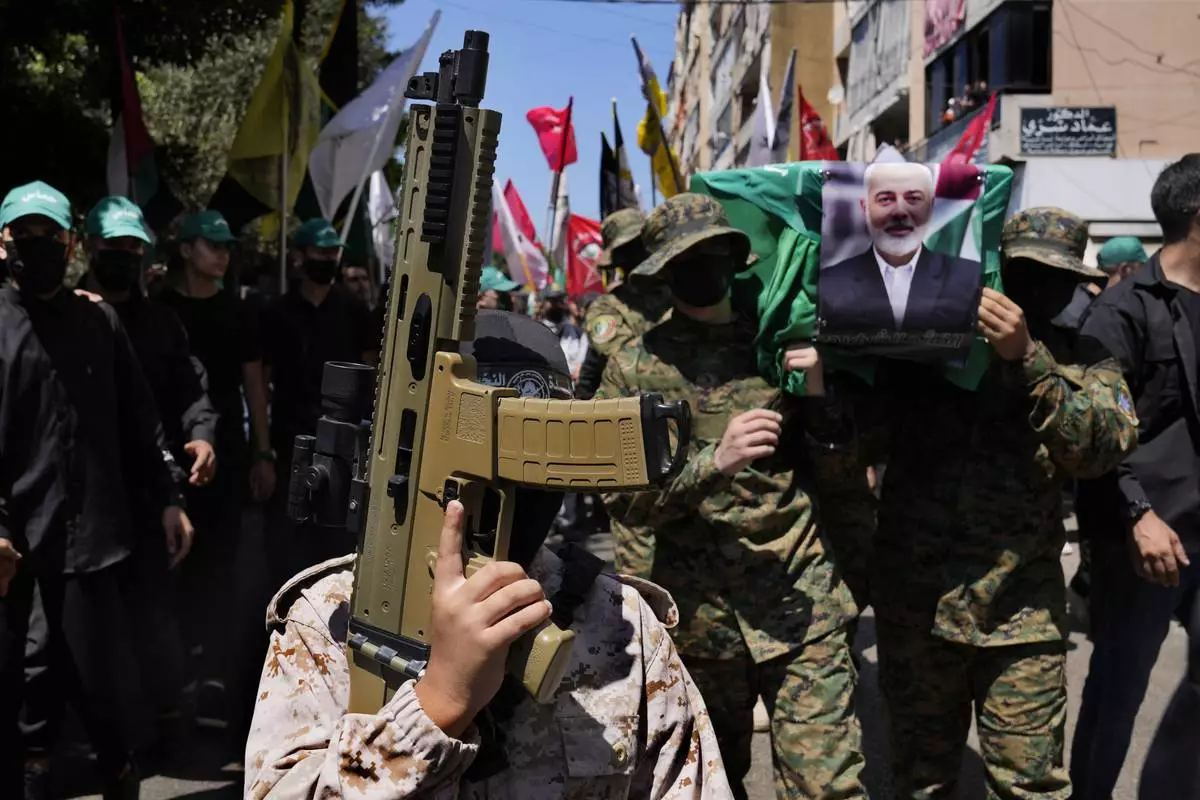
FILE - A boy holds a toy machine gun, as Hamas fighters, right, carry a mock coffin of Hamas political chief Ismail Haniyeh who was killed in an assassination in Tehran, during a symbolic funeral in Beirut, Lebanon, Friday, Aug. 2, 2024. (AP Photo/Hussein Malla, File)

FILE - An Israeli shelling hits an area in Lebanon next to the Israeli-Lebanese border at the Galilee region as seen from the Israel-annexed Golan Heights, Monday, Aug. 5, 2024. (AP Photo/Leo Correa, File)
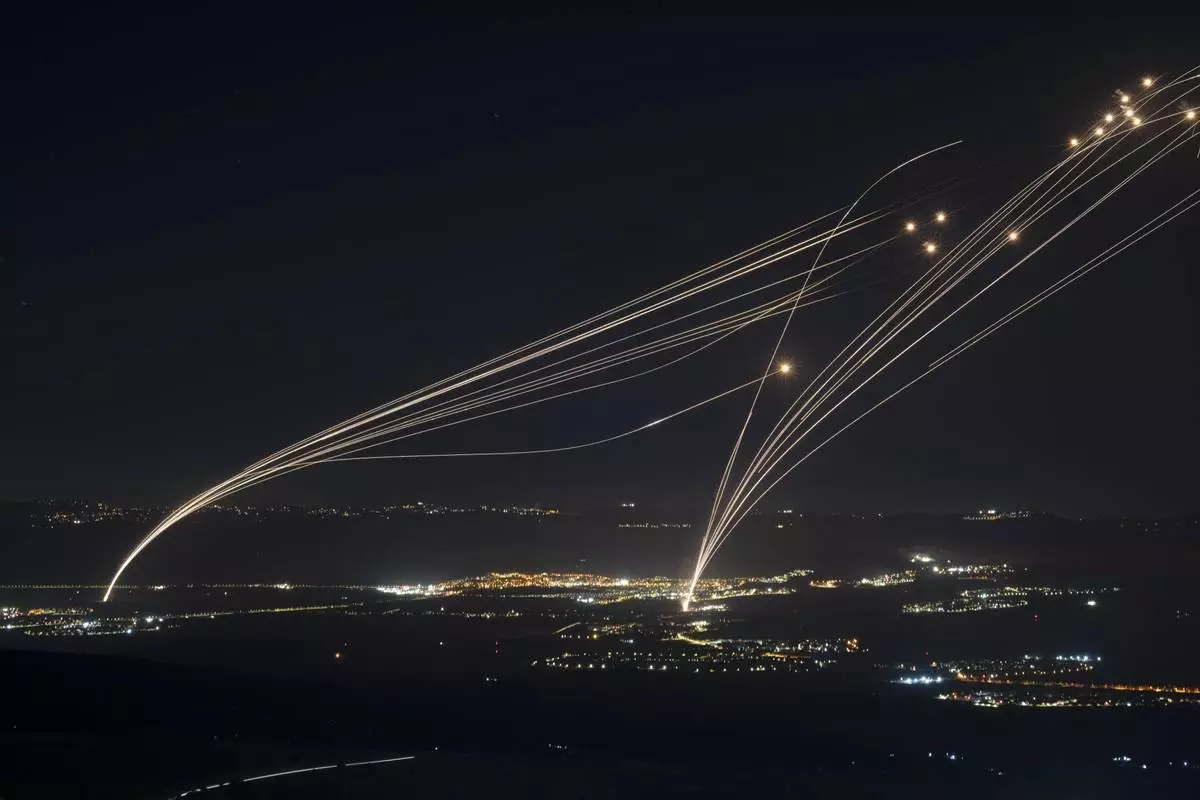
FILE - The Israeli Iron Dome air defense system fires to intercept an attack from Lebanon over the Galilee region as seen from the Israeli-annexed Golan Heights, Sunday, Aug. 4, 2024. (AP Photo/Leo Correa, File)
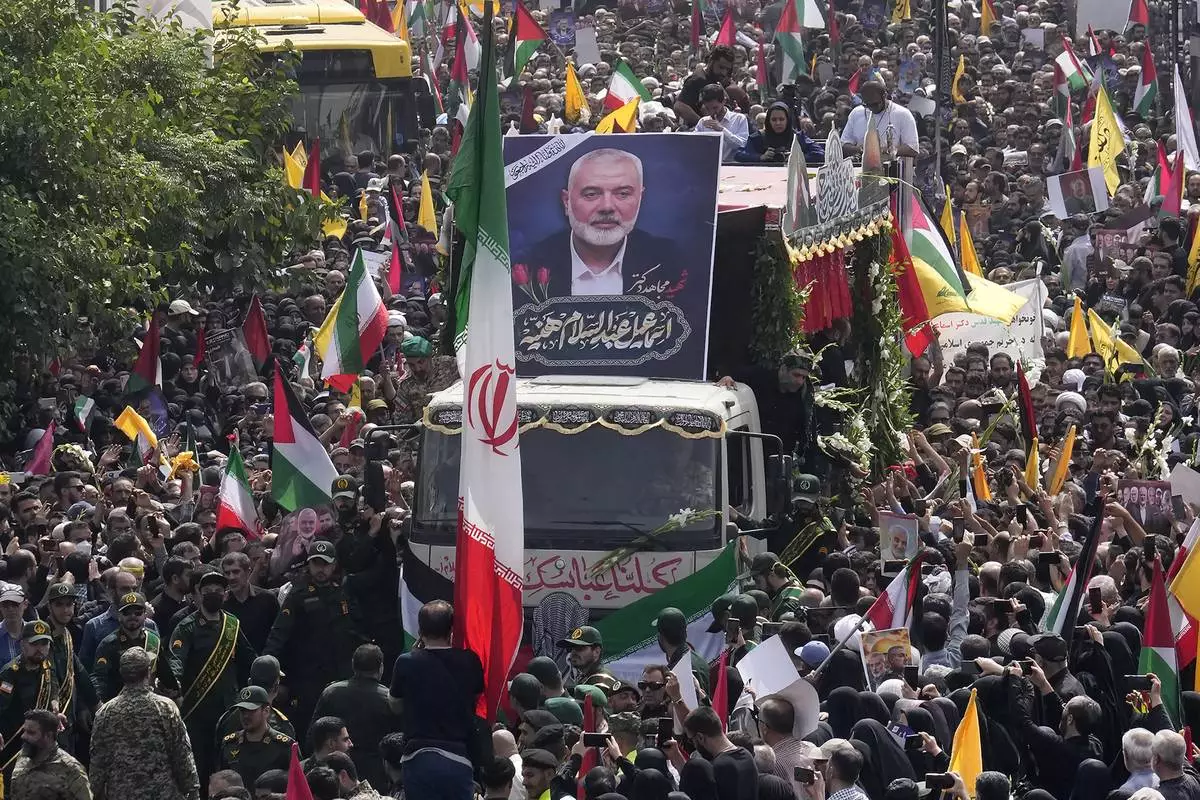
FILE - Iranians follow a truck, center, carrying the coffins of Hamas leader Ismail Haniyeh and his bodyguard during their funeral ceremony at Enqelab-e-Eslami (Islamic Revolution) Sq. in Tehran, Iran, Thursday, Aug. 1, 2024. (AP Photo/Vahid Salemi, File)













